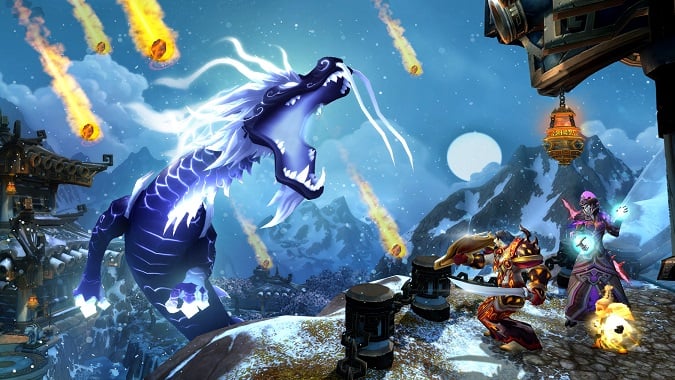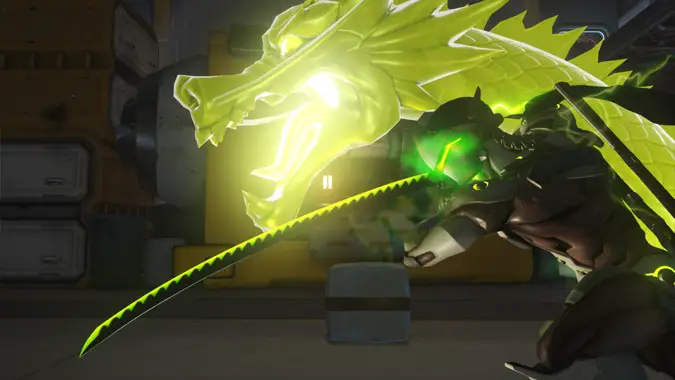New D&D playtest content gives Monks and Rangers delightful draconic powers

One of the things I love about playtest content in Dungeons and Dragons is when it gets weird. And newest Unearthed Arcana — think of it as a tabletop version of the PTR — gets good and dragony with new subclass options for Monks and Rangers: the Way of the Ascendant Dragon for our punchy kicky friends and the Drakewarden for our skulking shooty buddies.
What’s to say about these two subclasses? Well, before we get into the nitty gritty of powers and abilities, let me say this — dragons are cool, and using dragon power in your D&D class is even cooler. But let’s talk specifics. What are the Way of the Ascended Dragon and Drakewarden subclasses all about?

Monks gain draconic powers with Way of the Ascended Dragon
The Way of the Ascended Dragon is about matching your Ki to that of a specific dragon of your choosing. The level 3 abilities, Draconic Discipline and Breath of the Dragon, each approach this in a different way.
- Draconic Discipline allows you to change the damage from your unarmed attacks from bludgeoning to acid,
cold, fire, lightning, or poison damage, matching the breath weapon damage types of various dragons. The benefit here is simple enough — if you’re fighting someone like a Barbarian who is resistant to bludgeoning damage, or a Troll who regenerates from all but Fire and Acid damage, switching your unarmed attacks will be a huge benefit to you. Meanwhile, you can also learn to speak, read, and write Draconic if you don’t already, and you can use your reactions to reroll Intimidate and Persuasion checks if they didn’t succeed once per long rest. - Breath of the Dragon, meanwhile, is basically an enhanced version of a Dragonborn’s breath weapon, you can use it to replace one of your attacks during your attack action — so if you have more than one, you can attack normally but one of the attacks can be traded for the dragon breath attack. It’s good if you want to use a cone and hit a bunch of people, or a line and hit someone at distance, and the damage is respectable. You get your proficiency bonus in uses per long rest, and you can spend a Ki point for another use if you’ve already used them all.
And at higher levels, you get:
- Level 6: Wings Unfurled, which give you a fly speed when you use Step of the Wind, with proficiency bonus number of uses each day, or for a Ki point per use afterwards.
- Level 11: Aspect of the Wyrm lets you make yourself and your allies — that’s right, the entire party — immune to one of the classic draconic damage types listed under Draconic Disciple and lets you and your allies emit destructive waves of that element when hit in combat — essentially a party wide Hellish Rebuke.
- Level 17: Ascended Aspect, which grants you Blindsight for 30 feet, lets your breath weapon’s damage stick to targets, and lets your Aspect of the Wyrm cause you to explode and cause 4d10 damage to any targets you can see within 30 feet of you.
So that’s pretty boss, all told. It trades away some of the more esoteric powers other Monk subclasses might get for a lot of raw elemental damage and other cool dragon themed abilities. But that’s not the only subclass we have to look at here, so what about the Drakewarden?

Rangers become wardens of dragons
Well, not dragons exactly, but drakes are pretty close, and the Drakewarden Ranger subclass goes all in on the idea of you getting to play your inner Daenerys. You get a drake pet that grows up with you, gaining power as you do and letting you channel draconic magic for your own purposes.
Everything kicks off at level 3, when you get:
- Draconic Gift, which is not super awesome. You get to speak, read, and write Draconic, and you get the Thaumaturgy cantrip.
- But you also get a Drake Companion at third level, which is basically a small dragon that you can summon to attack your enemies and otherwise help you out. Your bond with the drake also allows it to infuse any attack it can see with elemental damage as a reaction, dealing an extra 1d6 damage of one of the various dragon types when that attack hits. You can only summon the drake once per long rest, but it lasts a number of hours equal to your proficiency bonus and you can spend a 1st level spell slot to re-summon it once it expires, so you could in theory keep it around for longer.
The drake’s AC is 14 plus your proficiency bonus and its HP is 5 plus your Ranger levels times five, which means it scales to a certain extent. And it gets stronger in other ways as you level up — the level 7 Bond of Fang and Scale ability would let you gain resistance to your drake’s damage type — so if your drake does acid damage, you get resistance to acid — while also giving your drake either a swim speed of 40 feet and the ability to breathe both air and water or a fly speed of 40 feet, and extra elemental damage on the drake’s bites. And at level 11, Drake’s Breath gives you and your drake a 6d6 breath weapon, which goes up to 8d6 at 15th level. Also at level 15, Perfected Bond makes your drake stronger — it grows to Large size, you can grant it (or it can grant you) resistance to a damage type as a reaction, and its bite attack deals another 1d6 elemental damage, for 2d6 total.

So how do these two subclasses stack up?
It’s hard to compare the variety of options the Monk’s Way of the Ascended Dragon gets to the Ranger’s drake pet. The fact that the drake gets stronger as you level and can be summoned with a 1st level spell slot — so if it dies? Just call it back instead of casting Alarm or Animal Friendship — that’s very powerful.
So I’m hard pressed to gauge the two. Since the Ranger has to use a bonus action to get their drake to attack, but all of the Monk’s abilities are usually straight-up actions or move actions, I think I’d give the edge to the Monk — what those actions can do, and what the Monk can do with Ki points, feels more flexible to me. But the Drakewarden has an intelligent animal companion that vanishes when it reaches 0 hit points and can then be recalled for a simple 1st level spell slot, so it’s a pretty hard call.
Well, the free uses of the various Ascended Dragon abilities before you have to start spending Ki points? That’s amazing. That’s a point in the Monk subclass’ flavor.
But once the Ranger’s drake gets Large, can they ride it? Can you ride a flying drake companion into battle? Have it breathe fire on your enemies? I need to know.
Ultimately, both subclasses are pretty cool. You can check them out now and — if you can convince your DM — give them a try in your next game.
Please consider supporting our Patreon!
Join the Discussion
Blizzard Watch is a safe space for all readers. By leaving comments on this site you agree to follow our commenting and community guidelines.
 @MatthewWRossi
@MatthewWRossi




